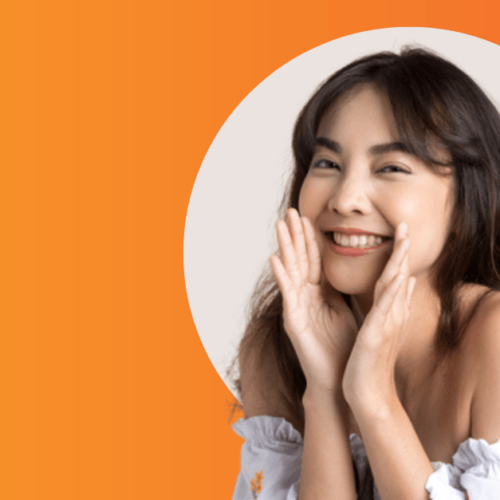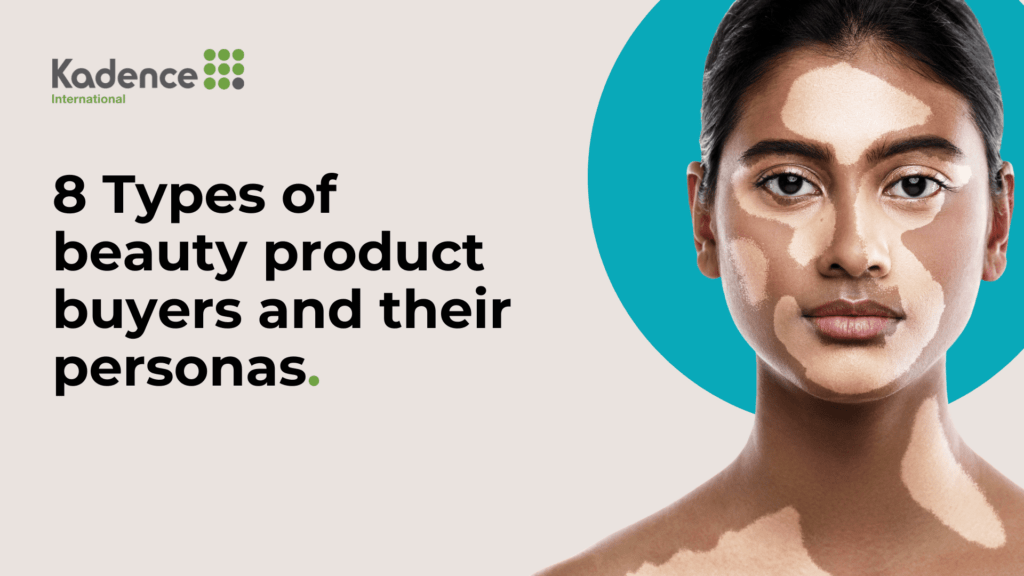Imagine Maria, a 24-year-old from Manila, scrolling through Instagram one evening. She stops at a captivating reel by Rei Germar, a popular Filipino beauty influencer, showcasing a new blush from Issy & Co. Cosmetics. Enthralled by the seamless application and glowing review, Maria immediately heads to Shopee and adds the blush to her cart. Within minutes, she’s made her purchase, convinced by Rei’s endorsement.
This scenario is increasingly common as influencer marketing rises in the beauty industry. Traditional celebrity endorsements, once the cornerstone of brand promotion, are being eclipsed by the influence of online content creators. These influencers have reshaped the marketing landscape with their ability to forge genuine connections with their followers.
The Philippines, ranking among the top countries for social media usage, provides fertile ground for influencer marketing. Brands leverage influencers to tap into this engaged audience, recognising that the endorsement of a trusted influencer can drive brand awareness and sales.
The Rise of Influencer Marketing in the Philippine Beauty Industry
Historical Perspective on Traditional Advertising vs. Influencer Marketing
Traditional Advertising:
- Celebrity Endorsements: Brands traditionally relied on well-known celebrities to endorse their products, leveraging their fame to attract consumers through TV commercials, glossy magazine spreads, and large-scale billboards.
- Mass Reach but Perceived as Scripted: While traditional advertising could reach millions, it often felt impersonal and scripted, leading consumers to view these endorsements as less genuine due to the obvious commercial intent.
Influencer Marketing:
- Dedicated Followings and Relatable Content: Influencer marketing leverages individuals who have built large, dedicated followings on social media platforms by creating real-time, relatable content showcasing products in everyday settings.
- Engagement on Social Media: Influencers interact with their audiences on Instagram, YouTube, and TikTok, fostering community through comments, live sessions, and interactive content.
According to Spiralytics, the influencer marketing industry in the Philippines is growing by 50% annually.
Key Factors Contributing to the Preference for Online Content Creators Over Celebrities
- Community and Engagement: Through two-way communication, influencers build a sense of community with followers, fostering higher engagement rates than celebrity endorsements.
- Authenticity and Relatability: Real-life demonstrations and reviews of products are perceived as genuine and relatable, with influencer reviews showcasing daily routines and product use.
- Cost-Effectiveness: Collaborating with influencers, particularly micro-influencers, offers high ROI. Brands partnering with multiple micro-influencers can target specific niches and demographics at a lower cost than celebrity endorsements.
Comparative Overview
| Aspect | Traditional Advertising | Influencer Marketing |
| Endorsements | Celebrity | Online Content Creators |
| Content Style | Scripted | Authentic, Relatable |
| Communication | One-way | Two-way Engagement |
| Cost | High | Cost-effective |
| Targeting | Broad | Niche and Demographic Specific |
| Perception | Less Authentic | Trusted, Community-driven |
Filipino Consumer Behavior and Influencer Shopping Habits
- High Engagement with Social Media for Shopping
Filipinos are one of the most receptive audiences to influencer marketing strategies due to their high screen time and social media engagement.
Over 86% of e-shopaholics in the Philippines buy directly from social media platforms, and 44% of these shoppers rely on influencer recommendations, showcasing the significant impact of influencers on purchase decisions.
-Spiralytics
- Widespread Following of Social Media Influencers
A Rakuten Insight survey conducted in May 2023 found that around 86% of social media users in the Philippines follow at least one influencer. This starkly contrasts the global average, where only 22.6% of internet users follow influencers, highlighting the unique enthusiasm of Filipino users for influencer content.
- Popularity of TikTok Content
TikTok videos are Filipino Gen Z users’ most popular social media content. 48% of Filipino TikTok users say videos are their favourite content, indicating a strong preference for this platform.
- Preference for Influencer Accounts Over Brand Accounts
Filipinos are more inclined to trust peer reviews and recommendations, making influencer endorsements more effective than traditional brand marketing.
Over 90% of Filipino consumers prefer influencer accounts to brand accounts due to the relatable content influencers create.
- Significant Purchase Influence from Influencers
Influencers’ genuine reviews and relatable content create trust and reliability, encouraging followers to consider and purchase endorsed products.
70% of Filipino online consumers have purchased a product based on an influencer’s recommendation.
- Desire to Become Influencers
This trend underscores Filipinos’ expressive nature and desire to create and share content, further driving the influencer culture in the country.
Over 75% of Filipinos use social media to become influencers themselves.
- Substantial Investment in Influencer Marketing by Brands
Most brands in the Philippines are willing to spend up to 50% of their marketing budget on influencer marketing. The effectiveness of influencer marketing is evident, with brands investing 60% more in this strategy. The rise in influencer marketing has led to the professionalisation of influencers, with many working under managers, agencies, or influencer marketing organisations to legitimise their careers.
The Persuasive Power of Influencers in the Philippine Beauty Market
Influencers uniquely shape public opinion about beauty products through authentic and engaging content. Unlike traditional advertisements, influencer content is perceived as genuine and relatable, which is crucial in an industry where personal recommendations and real-life demonstrations significantly impact consumer decisions.
- Trust and Relatability: Influencers share personal experiences and opinions about products, making their recommendations more credible. For instance, followers are more likely to trust a recommendation when an influencer shares their skincare routine and includes a particular product because it feels like advice from a friend.
- Engagement and Interaction: Influencers actively engage with their followers through comments, live sessions, and direct messages, creating a community feel that strengthens their bond with followers.
- Visual and Demonstrative Content: Influencers use visually appealing content to demonstrate how products work, often showcasing before-and-after results or tutorials. This provides tangible evidence of a product’s effectiveness, making it more convincing.
Examples of Filippino Influencers Who Have Successfully Promoted or Condemned Products
- Promotion:
- Rei Germar has successfully promoted several local beauty brands, including Issy & Co. Cosmetics. Her endorsement of Issy & Co.’s blush resulted in a 200% increase in sales within a month.
- Mae Layug’s collaboration with Colourette Cosmetics for their lipstick line saw the product sell out within 24 hours of launch due to her detailed reviews and swatches.
- Condemnation:
- Influencer Michelle Dy criticised a well-known skincare brand for causing breakouts, leading to a noticeable decline in sales and negative feedback on social media. This underscores influencers’ impact on public perception, emphasising the importance of maintaining product quality and transparency.
How Philippine Beauty Brands Strategically Partner with Influencers to Increase Their Reach
Targeted Collaborations: Brands identify influencers whose audience demographics align with their target market. For example, BLK Cosmetics partners with influencers like Anne Curtis, a celebrity deeply involved in the brand’s development. This partnership ensures that the product lines resonate well with the target audience, leveraging Anne Curtis’s strong personal brand and credibility.
Creative Campaigns: Influencers are given creative freedom to showcase products in engaging ways. For instance, Strokes Beauty Lab has partnered with influencers like Laureen Uy to promote their brow and eye makeup products. Laureen creates tutorials and lifestyle content that seamlessly integrates the products, making them appear essential to her beauty routine. Happy Skin Cosmetics also collaborates with influencers who create engaging content, such as unboxings and tutorials, to showcase the versatility and quality of their makeup lines. This approach allows followers to see the products in use and understand their benefits in real-life scenarios.
Long-term Relationships: Building long-term relationships with influencers helps brands establish consistent messaging and deeper connections with the influencer’s audience. For example, Colourette Cosmetics emphasises the importance of long-term collaborations with influencers like Rei Germar. These relationships foster trust and loyalty as followers see the influencer’s continued support for the brand over time. Sunnies Face, a popular Filipino beauty brand, has developed long-term partnerships with influencers who consistently promote their products. This strategy ensures ongoing brand visibility and a loyal customer base.
Case Study: Issy & Co. Cosmetics
Image Credit: Wonder.PH
Issy & Co. Cosmetics, a prominent Filipino beauty brand, has effectively leveraged influencer marketing to build its brand and increase market reach.
Campaign Overview: The brand collaborated with influencers like Toni Sia, Lukresia AKA thirdworldbb and Slo Lopez to promote their product lines, showcasing the versatility and quality of Issy & Co.’s products, such as their Active Skin Tint and diverse shade range foundations.
Impact: These collaborations increased website traffic, sales, and significant social media engagement, driving brand awareness and consumer trust by highlighting the thought and quality behind each product.
Case Study: Colourette Cosmetics
Image Credit: Rei Germar’s YouTube page
Colourette Cosmetics has also harnessed the power of influencer marketing to expand its market presence.
Campaign Overview: Colourette partnered with influencers like Rei Germar to promote their lipstick lines and other products through detailed reviews and real-life application tutorials.
Impact: These partnerships led to substantial sales growth and strengthened brand loyalty. Products often sold out quickly and generated considerable buzz on social media platforms.
Micro-Influencers vs. Macro-Influencers in Brand Promotion
Comparative Overview
| Aspect | Micro-Influencers | Macro-Influencers |
| Followers | 1,000 to 100,000 | 100,000+ |
| Engagement Rate | High | Moderate |
| Reach | Niche, specific demographics | Broad, wide audience |
| Content Style | Personal, community-driven | Professional, polished |
| Cost | Lower | Higher |
| Impact | Deep connections, trust-building | High visibility, broad awareness |
Challenges and Considerations in the Philippine Market
There are potential risks for brands relying heavily on Influencer Marketing:
- Market Saturation: The Philippine market is experiencing a surge in influencer partnerships, leading to oversaturation. Consumers may become desensitised to influencer endorsements, reducing their impact.
- Brand Misalignment: The diverse cultural and socioeconomic landscape in the Philippines means that selecting the wrong influencer can disconnect the brand from its target audience, potentially harming its image.
- Inconsistent Content Quality: The quality of influencer-generated content can vary significantly, affecting the brand’s perceived professionalism and quality. Poorly produced content can reflect negatively on the brand and diminish its credibility in the eyes of Filipino consumers.
- Influencer Misconduct: Influencer behaviour and controversies can quickly spread in the highly connected Philippine social media environment, impacting the brands they represent. Public scandals involving influencers can lead to negative publicity for associated brands.
Authenticity and Transparency Issues
- Authenticity Concerns: As influencer marketing becomes more commercialised in the Philippines, followers may start questioning the genuineness of endorsements. Influencers promoting multiple brands in quick succession can raise doubts about their authenticity.
- Transparency Challenges: There are growing concerns about the need for more transparency in influencer marketing, including inadequate disclosure of paid partnerships. Regulatory bodies and social media platforms in the Philippines increasingly demand clear disclosures to maintain trust.
Strategies for Brands to Ensure Effective and Ethical Influencer Collaborations
- Thorough Vetting Process: Implement a comprehensive selection process to ensure influencers align with the brand’s values, audience, and image. Conduct background checks and review past content to assess suitability.
- Clear Contracts and Agreements: Establish clear contracts that outline expectations, content guidelines, and disclosure requirements. Include clauses addressing potential misconduct and steps for resolution.
- Encouraging Authentic Content: Allow influencers creative freedom to produce authentic and relatable content rather than imposing strict guidelines. Encourage influencers to share genuine experiences and honest reviews to maintain credibility with their followers.
- Transparency and Disclosure: Ensure all sponsored content is disclosed according to Philippine regulatory requirements and platform guidelines. Encourage influencers to be transparent about their partnerships and sponsorships to maintain trust with their audience.
- Ongoing Monitoring and Evaluation: Monitor influencer campaigns to ensure compliance with brand guidelines and assess performance. Collect feedback from both influencers and consumers to refine and improve future collaborations.
- Diversifying Marketing Strategies: Complement influencer marketing with other marketing channels, such as traditional advertising, content marketing, and social media campaigns. This diversification helps mitigate the risks associated with over-reliance on a single marketing strategy.
Final Thoughts on the Future of Influencer Marketing in the Filipino Beauty Industry
The influencer marketing landscape in the Filipino beauty industry is poised for continued growth and evolution. With the Philippines being one of the most active social media markets globally, influencers will play an increasingly pivotal role in shaping consumer behaviour and driving brand engagement.
Trends Shaping the Future:
- Micro-Influencers’ Rising Influence: Micro-influencers, with their highly engaged and niche audiences, will become even more valuable. Their ability to foster genuine connections and trust with followers will make them indispensable for brands seeking targeted reach and high engagement.
- Increased Focus on Authenticity: As consumers become more discerning, the demand for authentic and transparent content will grow. Influencers who maintain honesty and relatability will more successfully foster loyal communities.
- Regulatory Enhancements: With the rise in influencer marketing, regulatory bodies in the Philippines are expected to enforce stricter guidelines on transparency and disclosure. This will ensure that sponsored content is identified, maintaining consumer trust.
- Diverse Content Formats: Influencers will continue to diversify their content formats, incorporating videos, live streams, and interactive content to engage their audiences more dynamically. Platforms like Instagram, TikTok, and YouTube will remain central to these strategies.
- Data-Driven Strategies: Brands will increasingly rely on data analytics to measure the effectiveness of influencer campaigns. Metrics such as engagement rates, reach, and conversion rates will be crucial in shaping future marketing strategies.
Leveraging Influencer Marketing Effectively for Filipino Consumers:
- Understand the Local Market: Brands must have a deep understanding of the local market, including cultural nuances, preferences, and trends. This ensures that influencer collaborations are relevant and resonate with Filipino consumers.
- Select the Right Influencers: Choosing influencers who align with the brand’s values and target audience is crucial. Brands should look beyond follower count and consider engagement rates, content quality, and the influencer’s relationship with their audience.
- Foster Long-Term Relationships: Building long-term partnerships with influencers can lead to more consistent and impactful campaigns. Long-term collaborations allow influencers to integrate the brand more naturally into their content, fostering deeper connections with followers.
- Encourage Creative Freedom: Allow influencers creative freedom to showcase products that feel authentic to their style. This authenticity enhances the endorsement’s credibility and makes the content more engaging.
- Prioritise Transparency: Ensure all sponsored content is disclosed to maintain transparency and trust with consumers. Transparent practices not only comply with regulations but also enhance the authenticity of the influencer’s endorsement.
- Utilise Diverse Content Formats: Encourage influencers to use a variety of content formats, including tutorials, reviews, unboxings, and live sessions. This variety keeps the audience engaged and provides multiple touchpoints for brand exposure.
- Measure and Optimise: Continuously monitor and analyse the performance of influencer campaigns. Use data-driven insights to optimise strategies, ensuring future collaborations deliver better results and higher ROI.
Just as Maria, the 24-year-old from Manila, was influenced to purchase a blush from Issy & Co. Cosmetics after watching a reel by Rei Germar on Instagram, countless other Filipino consumers are making their purchasing decisions based on the recommendations of trusted influencers. This scenario exemplifies the power and potential of influencer marketing in the Filipino beauty industry.
By staying attuned to the evolving trends and implementing these strategies, beauty brands in the Philippines can effectively leverage influencer marketing to build strong, authentic connections with consumers, driving long-term growth and success in the dynamic beauty industry. The future of influencer marketing in the Philippines is bright, and those who adapt and innovate will thrive in this ever-changing landscape.




 Senior Marketing Executive
Senior Marketing Executive Sales & Marketing
Sales & Marketing General Manager PR -Internal Communications & Government Affairs
General Manager PR -Internal Communications & Government Affairs Vital Strategies
Vital Strategies
 Customer Intelligence Director
Customer Intelligence Director